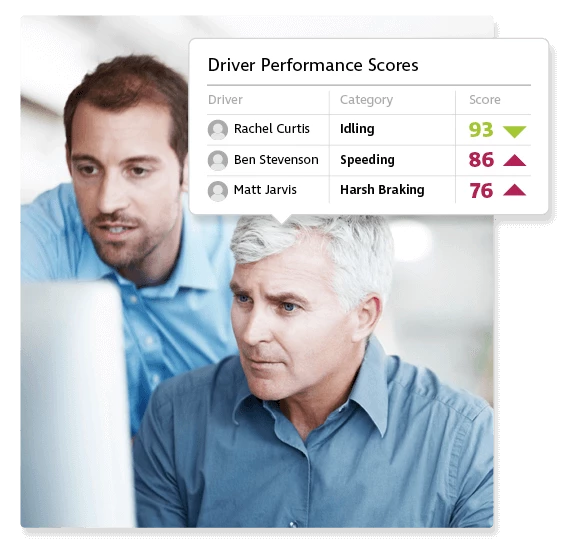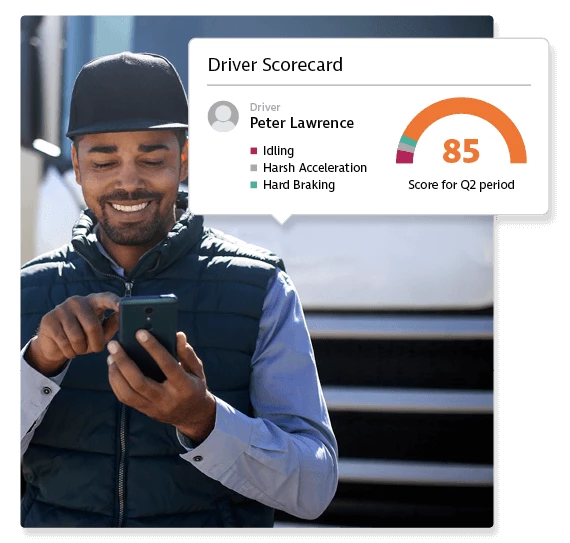Key Takeaway
Driver safety and wellbeing topped the list of planned investments in our recent TS24 telematics survey with many fleet operators looking to digitise and simplify their driver safety programs. In this guide we explore how automated rewards programs, real-time feedback and customised training are helping fleets improve safety, reduce risk and retain drivers.
Table of Contents
- The Role of Digitisation in Driver Safety Programs
- Ensuring Compliance and Continuous Improvement
- Integrating with Existing Systems
- Start Your Digital Driver Safety Program
The Role of Digitisation in Driver Safety Programs
Digitisation transforms driver safety programs by automating the collection and analysis of data related to driver behaviour. Real-time data and feedback are crucial in identifying risky behaviours and encouraging safer driving practices. This shift enhances the efficiency of safety programs and makes them more effective in preventing accidents and improving driver performance.

Telematics and Artificial Intelligence (AI)
Implementing telematics is critical for establishing a digitised driver safety program. By installing telematics devices in vehicles, it's possible to gather data on driver behaviour, including speed, braking patterns, and GPS location. This data can be shared with drivers through mobile apps so they can track their performance against team benchmarks and see areas for improvement Integrating AI enabled cameras takes this further by providing insight on driver activities including distracted driving, mobile phone use, tailgating and drowsy driving. These advanced driver monitoring capabilities help drivers to correct high risk behaviour through real-time feedback and coaching sessions.
Automated Rewards Programs
In any fleet management strategy, it's essential to motivate drivers to follow safety standards. Companies can effectively promote safer driving behaviours by using automated rewards programs powered by telematics data and driver scorecards. This approach establishes data-backed criteria for rewards that incentivise actions that improve safety. By setting clear benchmarks for what constitutes safe driving and automating rewards businesses can ensure that drivers are consistently motivated to uphold the highest safety standards.
Real-Time Feedback
Providing immediate feedback allows unsafe driving behaviours to be addressed before an incident occurs. Digital platforms that offer real-time alerts for actions like speeding, distracted driving or tailgating promote driver self-correction. By receiving instant feedback, drivers are encouraged to adjust their behaviours on the spot, significantly minimising the risk of accidents. These systems also engage drivers in their own safety processes, making them active participants in creating a safe driving culture.
Customised Driver Training
Analysing driving data to pinpoint areas of risk enables fleet operators to customise training programs to meet each driver's unique needs. This personalised approach makes training more relevant, optimising managers' and drivers' time. Developing training modules that focus on essential aspects of operations such as fuel-efficient driving, defensive driving, or adherence to road safety regulations can streamline training processes and can be effective in driving change when aligned with the needs of a specific driver.
Digitising Vehicle Inspections
Incorporating digital vehicle inspections revolutionises the traditional, often tedious task of completing Pre-Trip Inspection, turning it into a smooth and efficient process. With TN360 Inspections App, drivers can efficiently inspect their vehicles and report maintenance issues using a mobile app or an in-vehicle tablet. This technological integration saves time and boosts compliance and vehicle safety. By implementing a digital Inspection solution that enables drivers to carry out and submit inspections quickly, you ensure immediate reporting and prompt maintenance notifications, significantly enhancing the inspection process.
Ensuring Compliance and Continuous Improvement
Digitisation simplifies compliance with safety regulations and fosters continuous improvement. Digital logs and reports make it easier to track compliance, while the wealth of data collected supports the refinement of safety programs. Fleet managers can use real-time data to adjust policies and prevent accidents, ensuring that fleets can meet current safety standards and adapt to future changes. This proactive approach promotes a culture of safety and accountability, where ongoing analysis and feedback lead to a safer, more responsive fleet.

Continuous data analysis can also help identify potential risks before they lead to incidents, enabling preventative maintenance. This cycle of feedback, improvement, and adaptation is key to maintaining high safety standards and preparing for regulatory evolutions, ensuring fleets remain resilient and safe.
Integrating with Existing Systems
Successful digitisation requires seamless integration with existing fleet management systems. This ensures comprehensive oversight by combining safety data with operational metrics, allowing for informed, data-driven decisions. When safety systems communicate with maintenance schedules and coaching applications, it enhances efficiency and embeds safety across all aspects of a fleet operation.
Start Your Digital Driver Safety Program
Implementing digital driver safety programs by automating data collection and analysis, providing real-time feedback, and utilising AI-enabled technologies like telematics and cameras to monitor driver behaviour. Automated rewards programs incentivise safe driving, while customised training based on driving data optimises driver performance. Digitising vehicle inspections streamlines processes and ensures compliance, fostering a culture of safety and continuous improvement. Integration with existing fleet management systems will only further enhance oversight and efficiency, promoting safer driving practices and proactive risk management.

